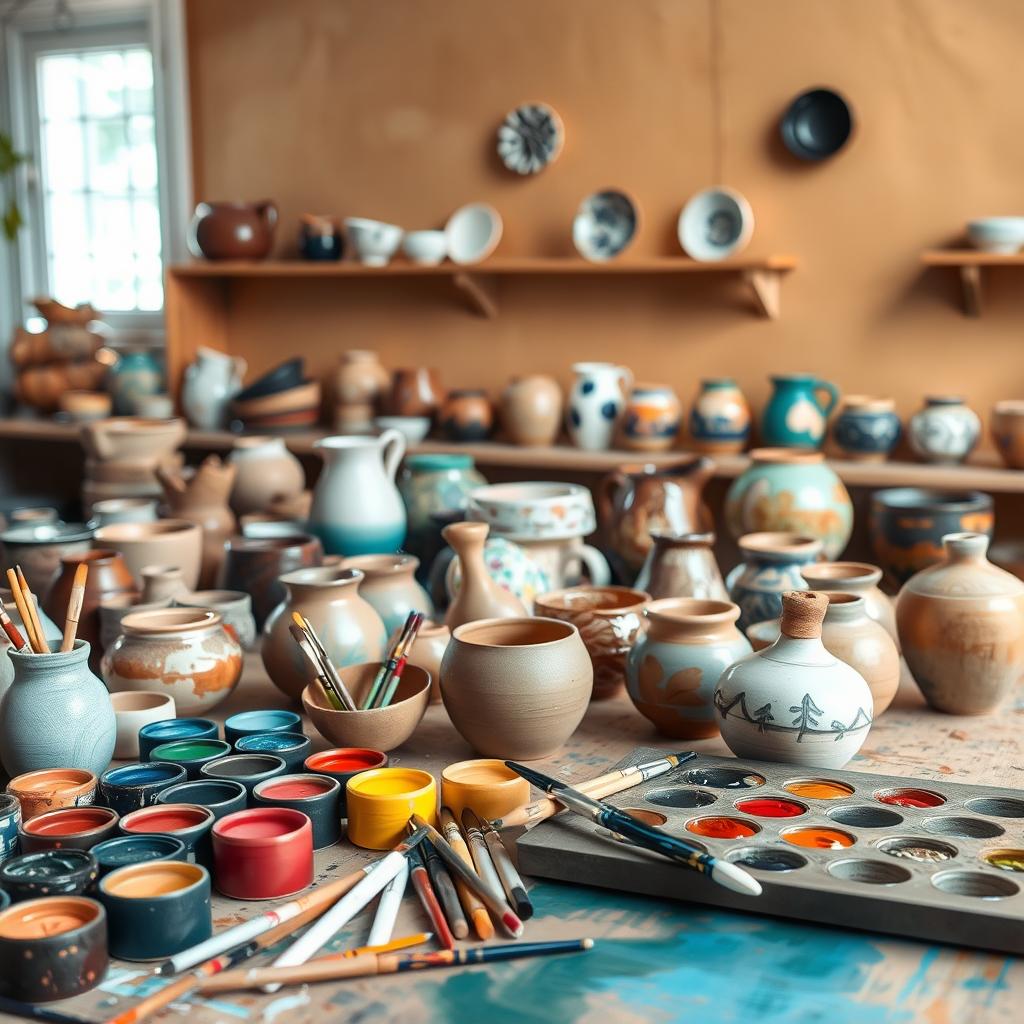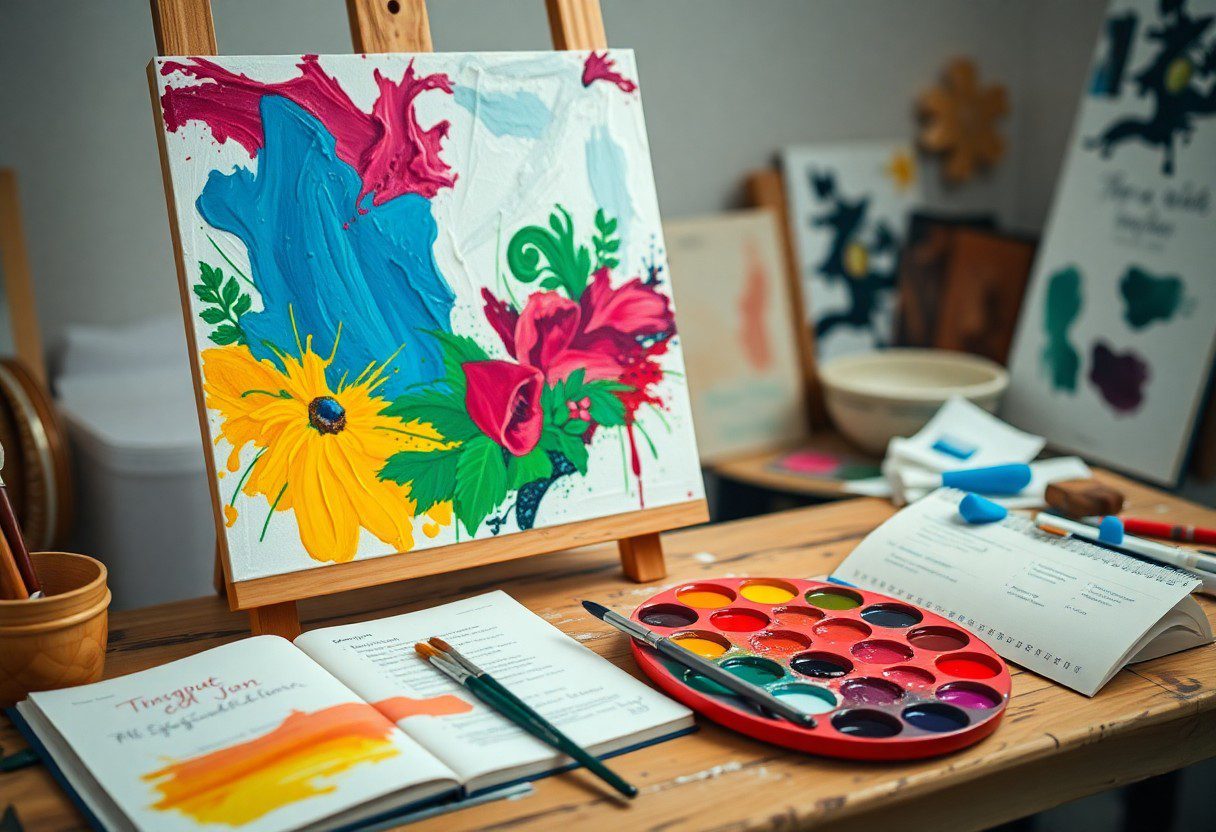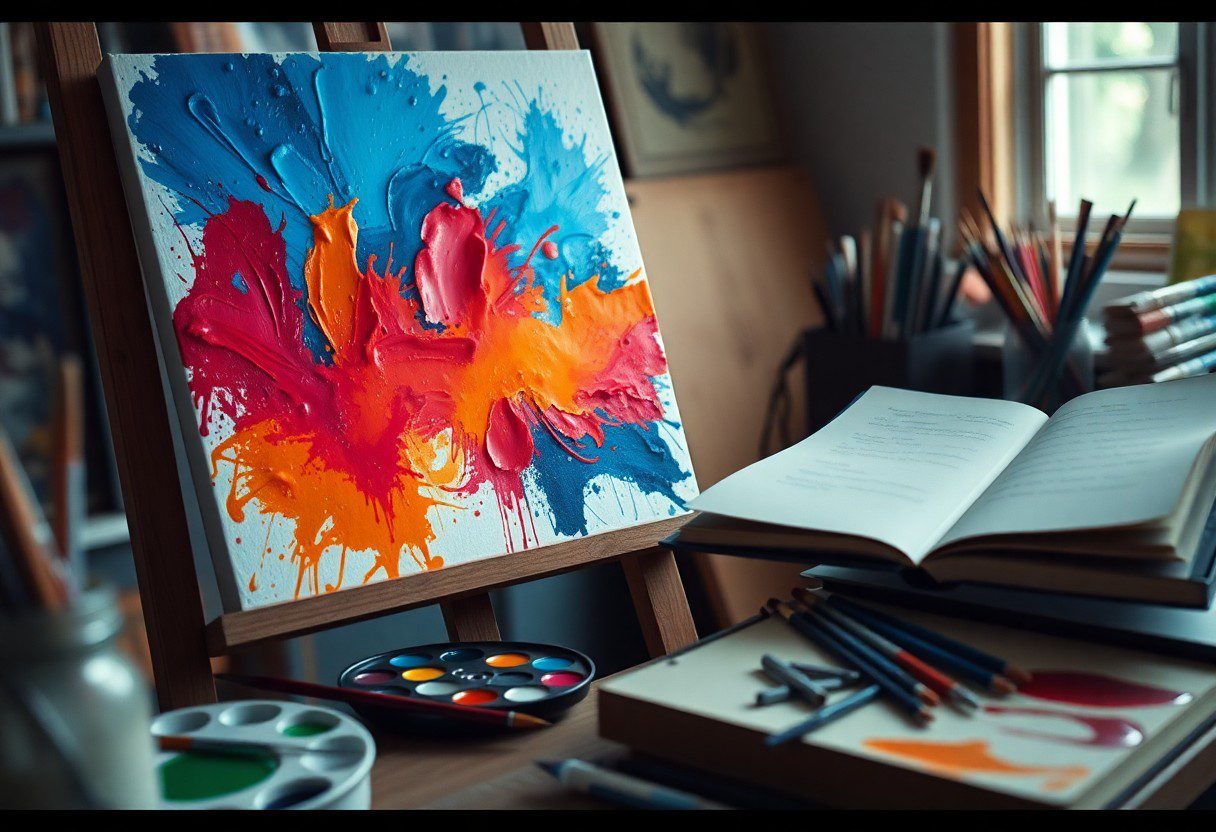Most artists struggle with creating dynamic compositions that draw the viewer in and leave a lasting impression. In this blog post, you’ll learn imperative techniques to enhance your compositions and make your acrylic paintings more engaging. From understanding composition principles to experimenting with color and contrast, these tips will provide you with the tools necessary to elevate your work. With practical advice tailored for your artistic journey, you can achieve the impact you desire in your paintings and captivate your audience like never before.
Understanding Composition in Acrylic Painting
For any artist, mastering composition is crucial to create visually striking acrylic paintings. Composition serves as the backbone of your work, guiding the viewer’s eye and conveying your intended message. By understanding and utilizing the principles of composition, you can transform ordinary scenes into powerful, compelling artworks that resonate emotionally with your audience.
The Importance of Composition
Around your canvas, the arrangement of elements dictates how effectively your painting communicates its story. Good composition fosters a sense of balance, harmony, or tension, all of which can evoke specific feelings in the viewer. Prioritizing composition not only enhances the overall aesthetic but also invites deeper engagement with your artwork.
Elements of Composition
For effective acrylic painting, it’s vital to grasp the key elements of composition, including line, shape, color, texture, and space. Each of these elements plays a role in directing the viewer’s attention and creating a cohesive visual narrative within your artwork.
Indeed, understanding line can help you lead the viewer’s eye through space, while well-placed shapes can create focal points and enhance storytelling. Color not only adds emotion but also establishes mood, while texture can evoke tactile sensations. Similarly, utilizing space effectively can create depth or highlight important details. By skillfully incorporating these elements, you enhance the depth and impact of your acrylic paintings, allowing they to resonate more profoundly with viewers.
Color Theory and Its Impact
You can elevate your acrylic paintings by understanding color theory, which plays a key role in creating visual interest and emotional response. By knowing the relationships between colors, such as complementary and analogous pairings, you can significantly enhance the impact of your work. Mastering color theory allows you to convey mood, create depth, and guide the viewer’s eye through your composition, making your paintings more engaging and dynamic.
Color Harmony
With a solid grasp of color harmony, you can create a sense of unity in your artwork. This involves balancing colors that complement each other while maintaining visual interest. By using a palette that adheres to harmonious color schemes, such as triadic or tetradic, you can induce feelings of tranquility or excitement, which resonates with your audience.
Contrast and Balance
Around your canvas, it’s imperative to utilize contrast and balance effectively. This not only adds depth to your painting but also ensures that your focal points stand out. By contrasting light and dark shades or warm and cool colors, you can create a vibrant dynamic that captures the viewer’s attention.
In fact, using contrast allows you to highlight key elements in your composition and can evoke strong emotional responses. Balancing various elements—be it color, form, or texture—ensures that no single area overwhelms the others, which is vital for maintaining visual clarity. When you intentionally design contrasting areas, consider how they can create tension or harmony. Utilizing too much contrast can be overwhelming, while too little can result in a flat composition, so finding that balance is imperative for an impactful piece.
Techniques for Dynamic Compositions
Assuming you want to capture your viewer’s attention and create a sense of movement in your acrylic paintings, employing effective techniques for dynamic compositions is imperative. These strategies will elevate your art by guiding the viewer’s eye and creating an emotional connection to your work.
Rule of Thirds
On a basic level, the Rule of Thirds divides your canvas into a grid of nine equal parts, encouraging you to position your focal points along these intersections or lines. This technique helps to create balance and draws attention to the most impactful areas within your composition.
Leading Lines
Around your canvas, incorporating leading lines can effectively guide the viewer’s eye towards the focal point of your painting. These lines can be natural elements like roads, rivers, or tree branches that draw attention and create a sense of depth.
To maximize the effectiveness of leading lines, use them intentionally to create pathways that pull your viewers deeper into your painting. Think about the direction and angle of these lines, as they should lead towards the main subject, enhancing the overall narrative of your artwork. Additionally, varying the thickness and color can create strong accents that highlight important elements, contributing to a more engaging composition. By mastering this technique, you not only guide the viewer’s eye but also create a more dynamic and immersive experience.
Creating Depth in Your Artwork
Not every painting needs to feel flat; depth is key to creating an engaging composition that draws the viewer in. By incorporating techniques like layering and atmospheric perspective, you can transform an ordinary piece into a dynamic experience. Explore varied positions, sizes, and colors in your work to elicit a sense of distance and proportion, thereby enhancing overall impact.
Layering Techniques
Any successful painting utilizes layering techniques to build depth and interest. Start with an underpainting to establish foundational shapes and values. Gradually add layers of color, transparent glazes, or textured elements to create dimension, making sure to adjust opacity for a more lifelike appearance. This approach not only enriches your color palette but also allows light to interact beautifully with your painted surfaces.
Atmospheric Perspective
To achieve a convincing sense of depth in your compositions, utilize atmospheric perspective. This technique suggests that objects appear lighter and less detailed as they recede into the background. By softening details and adjusting colors to cooler, muted tones in the distance, you can effectively simulate the effect of atmosphere on your subject. This method not only enhances the three-dimensionality of your work but also urges the viewer’s eye to travel through your piece.
Even a slight use of atmospheric perspective can dramatically alter the feel of your artwork. Consider how light interacts with objects at varying distances; closer elements are often rich with detail and vibrant hues, while those further away lose clarity and vibrancy. Incorporate this technique to achieve a more convincing sense of space, making the foreground elements pop while gently pushing the background into a soft blur. By mastering this approach, you invite viewers to explore the full depth of your artistic narrative.
Choosing the Right Focal Point
All great compositions start with a defined focal point that draws the viewer’s eye. By carefully selecting the right focal point, you elevate the narrative of your painting, guiding observers to the heart of your artwork. Consider elements that hold significance and create visual intrigue, making it easy for your audience to connect with your expression.
Finding the Center of Interest
Focal points serve as the anchor of your composition. To find the center of interest, think about where you want to lead your viewer’s gaze. This could be achieved by using distinct colors, contrast, or unique shapes that stand out against the rest of your painting, ensuring that viewers’ eyes naturally gravitate toward it.
Techniques to Enhance Focus
Behind every impactful painting lies strategic techniques for enhancing focus. Utilize contrast in color and value to make your focal point pop. Employ leading lines to direct the viewer’s journey through the painting. Additionally, consider softening the edges around your focal area while keeping other sections sharp; this juxtaposition ensures the viewer’s attention remains trained on your key element.
This blending of techniques allows you to manipulate what the viewer sees first and keeps their attention anchored. Utilizing natural elements like light and shadow can create depth, enhancing the three-dimensionality of your focal point. The distance from other details can also enhance the focus, making your focal area feel even more important in the overall scene. Be deliberate in your approach, as the right balance can lead to a powerful and engaging artwork!
Incorporating Texture and Detail
Your painting can achieve remarkable depth and interest through the use of texture and detail. These elements not only enhance the visual experience but also draw the viewer’s eye, inviting them to explore your work more closely. By strategically employing techniques that create tactile sensations, you can elevate your acrylic paintings from mere images to immersive expressions of art.
Tools and Materials for Texture
Any artist looking to incorporate texture into their paintings will benefit from a variety of tools and materials. Consider using palette knives, sponges, or even natural materials like sand or fabric to add unique textures. Experimenting with different acrylic mediums, such as gel or paste, can also help you achieve the desired tactile effect, making your artwork stand out.
Strategic Detailing
For effective use of detail in your paintings, prioritize the areas that will attract the viewer’s eye. By focusing on specific parts of your composition, you can create a sense of hierarchy and draw attention to important elements. Use fine brushes for intricate details while allowing larger areas to remain more abstract, which will enhance the overall impact of your piece.
Considering the balance of detail in your composition, it is crucial to highlight key elements while allowing some areas to rest in simplicity. Overly detailed sections can often detract from the overall message of your work, so strive for a harmonious blend of detailed portions and negative space. Make sure to utilize color and texture strategically to guide the viewer’s gaze where it matters most. This thoughtful approach will enable you to create a more engaging and dynamic composition that resonates with your audience.
Summing up
Summing up, enhancing your acrylic painting compositions requires a blend of thoughtful planning and experimentation. By incorporating principles such as balance, focal points, and color harmony, you can create more impactful artwork. Don’t hesitate to explore various techniques and materials to find what resonates with your style. Use these tips as a foundation, and continue to refine your skills through practice and observation. The journey of improvement in your compositions will lead to more dynamic and engaging pieces, ultimately enriching your artistic experience.
FAQ
Q: What are some basic composition principles to consider when starting an acrylic painting?
A: When beginning an acrylic painting, it’s important to consider several fundamental composition principles. These include the rule of thirds, which suggests placing focal points at the intersections of imaginary grid lines, leading the viewer’s eye through the painting. Other principles include balance, which involves distributing visual elements evenly, and contrast, which can help highlight key areas. Shape and form play a significant role as well; using a strong silhouette can provide a solid foundation for your painting.
Q: How can color choices influence the impact of my acrylic paintings?
A: Color choices can dramatically influence the mood and overall impact of your acrylic paintings. Using complementary colors can create interest and vibrancy, while analogous colors contribute to harmony and unity. Additionally, consider the emotional associations of colors—warm colors often evoke feelings of excitement and energy, while cool colors can create a sense of calm. Experimenting with color saturation and brightness can also enhance depth and draw attention to focal points in your composition.
Q: What techniques can I use to create depth in my acrylic paintings?
A: To create a sense of depth in your acrylic paintings, consider employing techniques such as layering, perspective, and value contrast. Layering involves applying multiple coats of paint, allowing underlying colors to show through, which can add richness and dimension. Implementing linear perspective through the use of converging lines can help establish depth, while varying the value of colors—using lighter shades in the background and darker shades in the foreground—can also enhance the sense of three-dimensionality.
Q: How can I effectively use negative space in my compositions?
A: Negative space refers to the area surrounding and between the subjects of your painting. Effectively utilizing negative space can help define the main subjects and draw attention to them. To use negative space well, consider simplifying the background elements and leaving some areas of the canvas blank. This not only encourages viewers to focus on the focal points but also adds balance and tension to the overall composition. Practice observing and sketching negative spaces to develop an intuitive understanding.
Q: Are there specific acrylic painting techniques that can enhance composition?
A: Yes, several acrylic painting techniques can enhance the composition of your work. Techniques such as glazing, where thin layers of transparent paint are applied, can create depth and vibrancy. Scumbling, which involves using a dry brush to apply a thin layer of lighter paint over a dry base layer, can add texture and interest. Additionally, utilizing brush strokes intentionally can lead to dynamic movements within your composition. Mixing techniques like these can provide both atmosphere and structure to your paintings.





